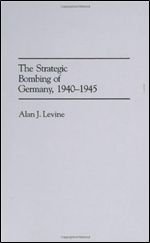Significance: North Dakota stands apart from most U. S. states in its geographical remoteness, the small size of its population, and the small number of non-European immigrants it has attracted. As younger residents of rural counties have gravitated to the major cities of Bismarck and Fargo or left the state permanently to seek employment elsewhere, the state’s traditionally strong agricultural industry has faced a growing labor shortage that has not been alleviated by significant new immigration.
Located in the upper Midwest, North Dakota has experienced its own unique pattern of ethnic group immigration. Most of the states in its region had received most of the immigrants that would come to them before 1890. During the early twentieth century, North Dakota was the only state in the region to continue receiving significant numbers of new immigrants. Most of these late arrivals were northern Europeans who settled in the western part of the state, which had a strong agricultural economy.
Nineteenth and Twentieth Century Trends
Dakota Territory, which was created in 1861, was split in 1889, when the states of North and South Dakota entered the union. During the late nineteenth century, European immigrants settled throughout the Great Plains. The 1900 U. S. Census revealed that 30 percent of North Dakota’s residents were Scandinavians, particularly Norwegians. Most of them settled in the eastern and northern areas of the state. Germans formed the second-largest immigrant group. Ethnic Germans from the Russian Empire were particularly prominent in the south-central part of the state. In North Dakota’s northern counties, Canadians were the largest immigrant group.
In contrast to most other states, North Dakota did not undergo a surge in population growth or experience an infusion of non-European immigrants during the late twentieth century. In 1970, fully one-third of the state’s population still spoke German at home, and one-sixth retained Norwegian and Swedish as their mother tongues. However, since the mid-twentieth century, the state has
Profile of North Dakota
|
Region |
North-central |
|
Entered union |
1889 |
|
Largest cities |
Fargo, Bismarck (capital), Grand Forks |
|
Modern immigrant communities |
Germans |
|
Population |
Percent Percent U. S. Total of state of U. S. rank |
|
All state residents |
635,000 100.0 0.21 48 |
|
All foreign-born residents |
13,000 2.1 0.03 50 |
Source: U. S. Census Bureau, Statistical Abstract for 2006.
Notes: The U. S. population in 2006 was 299,399,000, of whom 37,548,000 (12.5%) were foreign born. Rankings in last column reflect total numbers, not percentages.
Undergone a significant demographic shift, as the youngest generations of immigrant families have sought economic opportunities outside North Dakota. Between 1950 and 1970 alone, 382 of the state’s towns lost 80 percent of their population. Over the ensuing decades, the use ofethnic languages faded as third-generation family members left the state for good. Nevertheless, the immigrants’ core values of family, church, and community remained strong.
North Dakota’s aging workforce has created a labor shortage that was approaching crisis proportions during the early twenty-first century. The traditionally strong agricultural economy has been particularly threatened. However, native-born North Dakotans have resisted proposals to invite new manufacturing industries into the state, fearing that they might attract a wave of illegal immigrants who would undermine longstanding traditions within the tight communities of northern European immigrant descendants. Declining rural population has led to farm consolidations, as well as school district consolidations, and mergers of church congregations.
Gayla Koerting
Gjerde, Jon. The Minds of the West: The Ethnocultural Evolution of the Rural Middle West, 1830-1917. Chapel Hill: University of North Carolina Press, 1979.
Kiely, Kathy. “Can Aging N. D. Resist Change Amid Immigration Debate?” USA Today, November 25, 2007.
Wilkins, Robert P., and Wynona Wilkins. North Dakota: A Bicentennial History. New York: W. W. Norton, 1977.
Wishart, David J., ed. Encyclopedia of the Great Plains. Lincoln: University of Nebraska Press, 2004.
Further Reading
Blouet, Brian W., and Frederick C. Luebke. The
Great Plains: Environment and Culture. Lincoln: University of Nebraska Press, 1979.
See also: German immigrants; Minnesota; Nebraska; Scandinavian immigrants; South Dakota; Westward expansion.




 World History
World History









